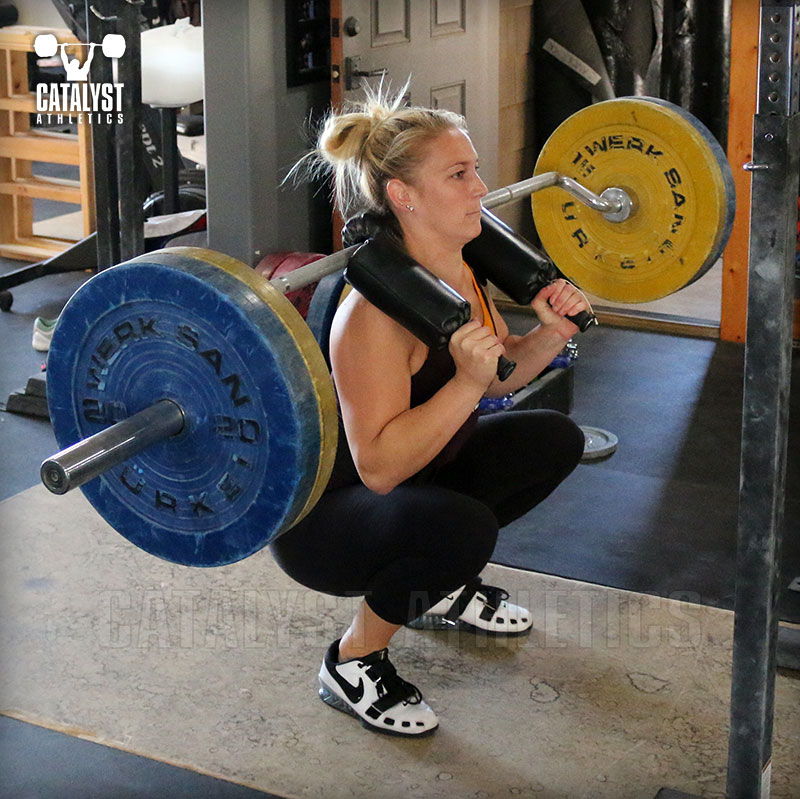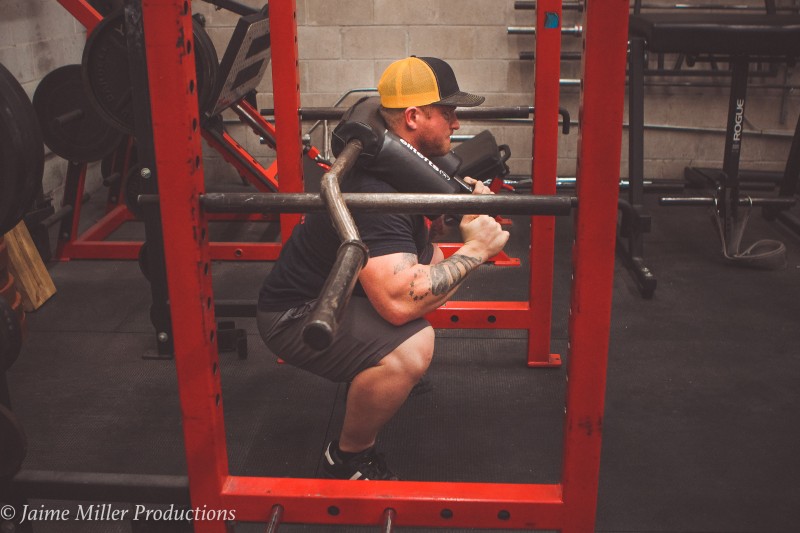
What are back squats?
Back squats are the original mass builder for bodybuilders and a staple for strength trainers. They are great for developing mass in the lower body as they activate the quads, glutes, hamstrings, and core muscles.
The majority of bodybuilders say that if they could only do one exercise for lower body development, it would be the squat. All others are just accessory movements!
In a nutshell, the back squat is a resistance exercise that utilises a barbell, weight plates, and a rack. Many gyms will have a dedicated squat rack, usually surrounded by mirrors so that you can keep an eye on your form.
The bar is placed at chest height on the rack and loaded up. It is then just a case of getting under the bar, taking the strain on your upper back and squatting away.
There are many different variations of squats such as the front squat, goblet squat, hack squat, and Bulgarian split squat. In this article we will be focusing on the back squat, the muscles that it works with, how to perform the movement and variations of the back squat.
Which muscles are targeted with back squats?
How do I perform the back squat?

Weighted back squat.
- Adjust the hooks on a rack to upper chest height, place the bar on the hooks and load it with the desired weight plates. Make sure that the plates are secured with clips and add a neck pad if required.
- Get underneath the bar so that it rests on your upper back and shoulders. Make sure that it is comfortable and secure. Grip it on each side of the shoulder. The grip width is not important, but you must make sure that it is steady on your back.
- Unhook the bar and take a step backwards so that you are taking the strain of the weight. Set your stance with feet just slightly wider than shoulder-width and pointing slightly outwards. Keep a straight back and steady yourself.
- Hinge at the hips and flex the knee over the top of your feet as you squat down. Push your glutes out and keep a straight spine.
- It is up to you how deep you squat. Squatting low increases the range of motion, but it also puts a lot of strain on the knee, increasing the risk of injury. If you are new to squatting or do not have great mobility, try and get your knees to flex to at least 90 degrees.
- As you push up, breathe out and press through your heels. Use an explosive movement on the press and lower the weight in a slow, controlled motion.
- Repeat for the required number of reps and sets.
Tips for a better squat.
- Use a belt! Lifting belts are there to offer support and prevent injury, so why not wear one. There are many inexpensive training belts on the market and using one will support your lower back and help you to keep a straight spine.
- Knee straps are another good option. Even if you have strong knees, strapping them up offers support and stability to your squat. The aim is to put pressure on the muscles, not the joints.
- Neck pads are popular when squatting heavy. They do not provide any other benefit other than making the bar more comfortable across your neck.
- Try to squat without shoes. Going barefoot or with just socks allows you to push through your heels and get better stability. If you want to wear shoes, opt for lifting shoes that have a solid, flat base and are tight-fitting.
- Make the most of the mirrors. There is a reason that most squat racks are surrounded by mirrors. You can use them to correct your form, make sure that your back is straight and make sure that you are not leaning. If you do not have mirrors, use your phone to video your squat performance so that you can look back on it and identify areas for improvement.
Back squat variations.
Safety bar squat.

Smith machine squat.
- They are great for training heavy without a spotter as you can use the safety stops.
- The smith machine provides a fixed bar so you do not need to worry about stabilising the bar.
- The rails provide smooth movement, making it great for beginners.
- The movement is restricted to straight up and down. There is no room for flexing at the top or bottom of the movement.







